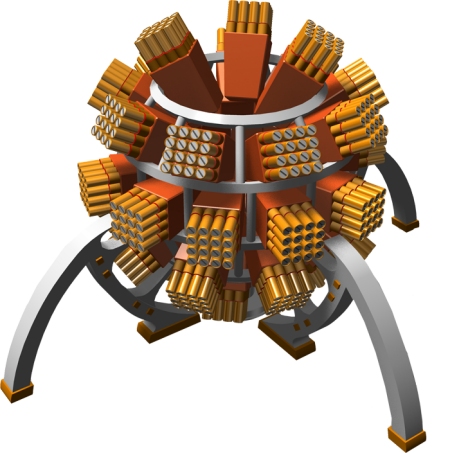The figure shows an illustration of the diffractometer; camera distance is 0.45m.

College of Engineering, Ibaraki University* JAEA, Japan** Tokyo Institute of Technology*** Ibaraki Prefectural Government****
○Ichiro Tanaka* Nobuo Niimura* Takashi Ohhara** Kazuo Kurihara** Katsuhiro Kusaka** Takaaki Hosoya** Tomoji Ozeki*** Kazuya Aizawa** Yukio Morii** Masatoshi Arai** Makoto Hayashi**** Kazuhiro Ebata**** Yoshiki Takano****
Ibaraki Prefectural Government in Japan has started to construct a TOF neutron diffractometer for biological macromolecules for industrial use at J-PARC. The diffractometer is designed to cover the sample crystals which have their cell edges up to around 150 Ang. It is expected to measure more than 100 samples per year if they have 2mm3 in crystal volume according to simple calculation. The efficiency is more than 50 to 100 times larger than the present high performance diffractometers, BIX-4 in JRR-3 reactor in JAEA. To realize this performance, a coupled moderator (intense neutrons, but broad pulse in time resolution) was selected. In addition, two important and key items should be developed; a new detector with high spatial resolution and a special software to de-convolute overlapped sopts in data reduction. The detector uses ZnS:Ag/6LiF scintillator with wavelength-shift-fiber (WLSF) system. And the software has been designed using simple-profile-fitting method. The current status of these developments will be reported with an idea of system to promote industrial uses.
The figure shows an illustration of the diffractometer; camera distance is 0.45m.
